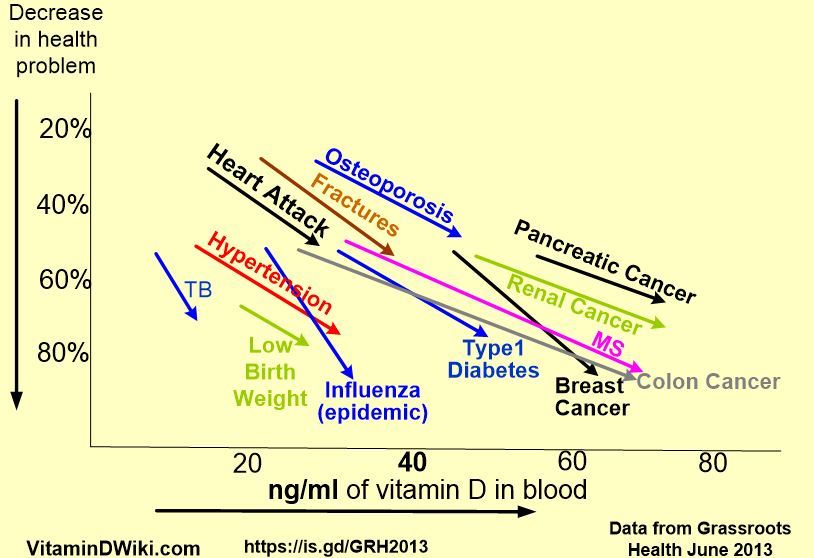Nutritional Rickets associated with vitamin D levels less than 19 or perhaps 26 ng
Nutritional rickets: calcium or vitamin D deficiency? – Editorial
The American Journal of Clinical Nutrition, nqab121, https://doi.org/10.1093/ajcn/nqab121
Roger Bouillon
Sempos et al. (1) in the present issue of the American Journal of Clinical Nutrition studied the interaction between vitamin D status [defined by serum concentration of 25-hydroxyvitamin D or 25(OH)D] and calcium intake in Nigerian children with rickets. They observed that a serum concentration of 25(OH)D below 47.5 (possibly even 65) nmol/l was associated with an increased risk of rickets in children with a very low calcium intake (about 200 mg/d). Indeed, the calcium intake of the ricketic children was similar to that of healthy controls, whereas serum 25(OH)D strongly discriminated between both groups. This 25(OH)D threshold is much higher than the one [25–30 nmol/L (2–4...
See also Vitamin D Life
There is a lot of discussion as to how much Vitamin D is needed to treat each health problem
Saudi study defines normal Vitamin D level to be 50 to 70 ng (diabetes, etc.) - June 2020
More than 30 ng of vitamin D is sometimes needed (Kidney needs 50 ng) – March 2019
Vitamin D is needed for human fertility – goal is 50 ng – Sept 2018
Is 50 ng of vitamin D too high, just right, or not enough
- has the following - click on image for details

Overview of Rickets and vitamin D contains the following summary
{include}
